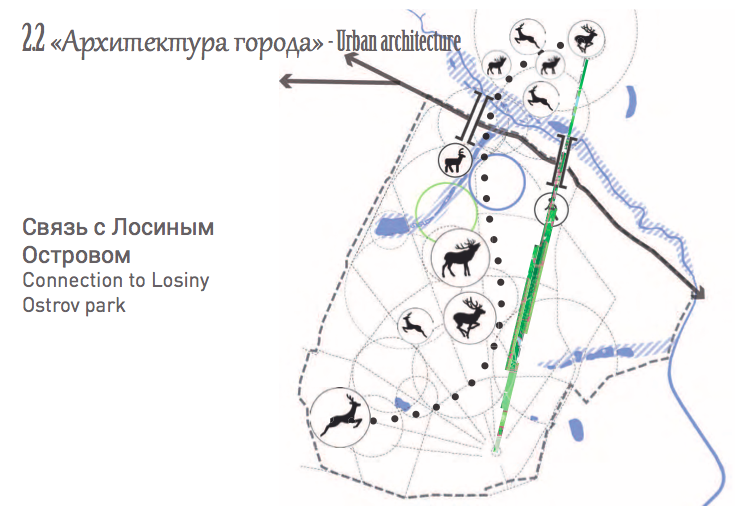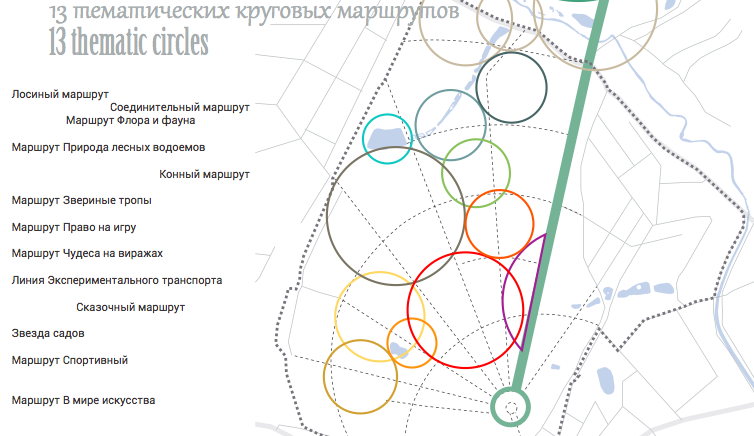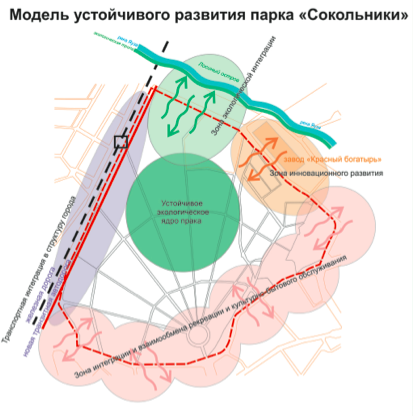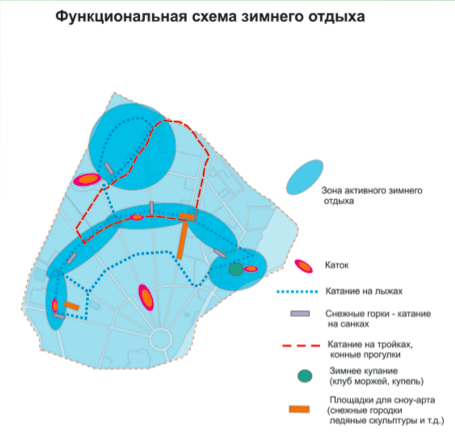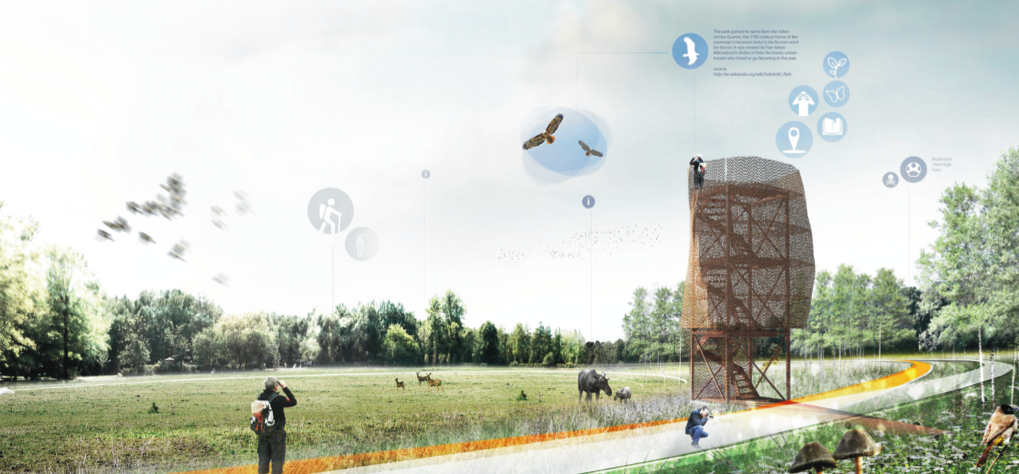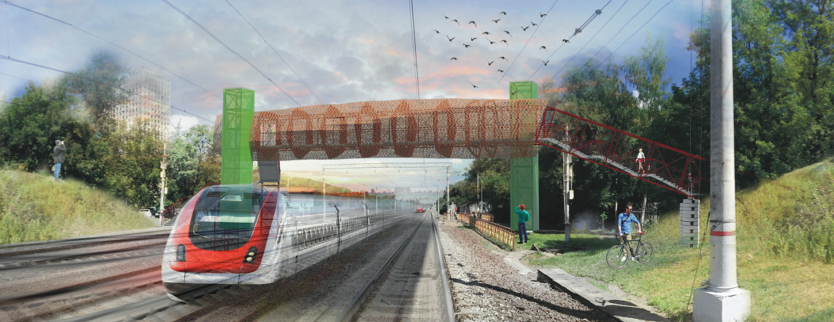5 / Smart Park
Authors: Ilex Paysages et Urbanisme and Wagon Landscaping (France), Real Landscape (Russia). Consultants: Bernard Snudger, Elizabeth Esayan, Tatyana Gubskaya, Olga Barykina.
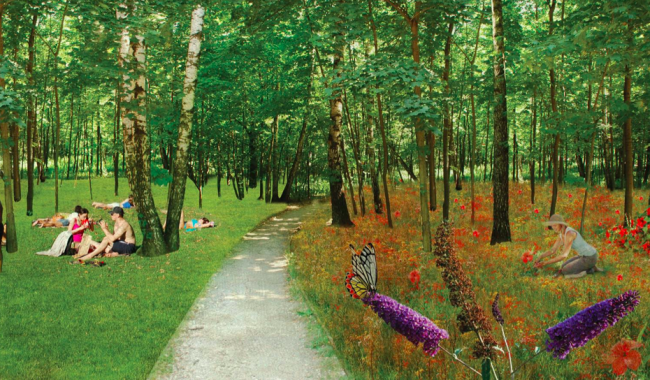
Fifth place. "Smart Park" Project. Authors: Ilex Paysages et Urbanisme and Wagon Landscaping (France), Real Landscape (Russia).
On top of the proverbial Sokolniki's radial rays, the architects apply a network of thirteen circular aisles of various sizes, one circle being one thematic route. The list of the themes includes the nature of forest reservoirs, deer trails, as well as a sport, a fairy-tale, one for experimental transport, and the elk and equestrian routes.
To better integrate Sokolniki into the urban environment, the authors of this project propose to make yet another park entrance in the north, as well as organize and improve thirteen extra entrances and provide a sufficient number of parking lots. The main entrance, the one located at the Sokolniki Val Street will be connected to the new one by a mean line along the full length of which the visitors will be able to use various kinds of eco transport: from roller blades to segways. There are also going to be some fast food points here. Finding one's way around and learning about the current public events will be made easier by the specially developed mobile application.
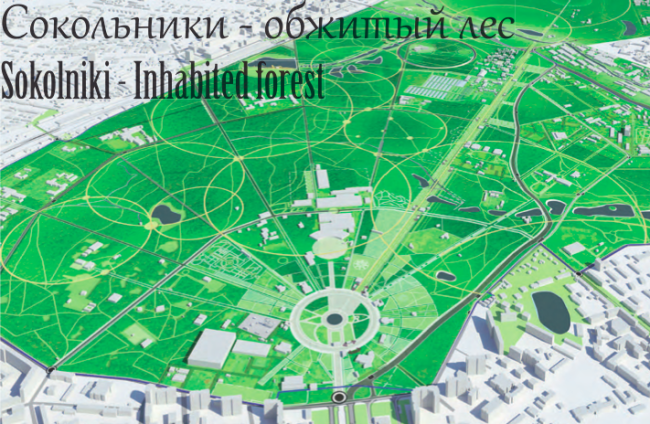
Fifth place. "Smart Park" Project. Authors: Ilex Paysages et Urbanisme and Wagon Landscaping (France), Real Landscape (Russia).

Fifth place. "Smart Park" Project. Authors: Ilex Paysages et Urbanisme and Wagon Landscaping (France), Real Landscape (Russia).
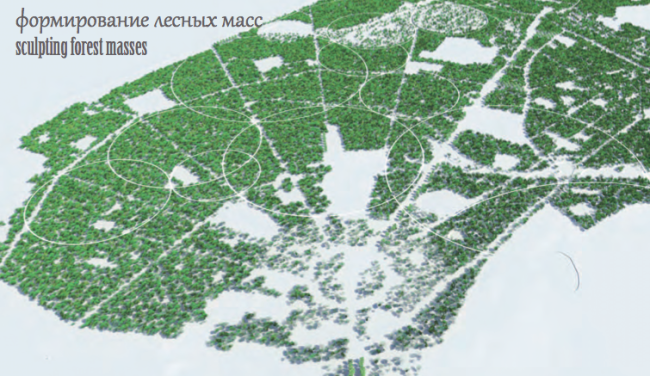
Fifth place. "Smart Park" Project. Authors: Ilex Paysages et Urbanisme and Wagon Landscaping (France), Real Landscape (Russia).
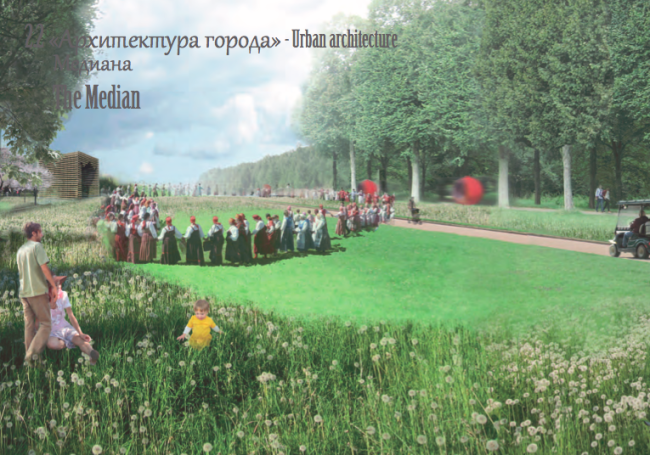
Fifth place. "Smart Park" Project. Authors: Ilex Paysages et Urbanisme and Wagon Landscaping (France), Real Landscape (Russia).

Fifth place. "Smart Park" Project. Authors: Ilex Paysages et Urbanisme and Wagon Landscaping (France), Real Landscape (Russia).
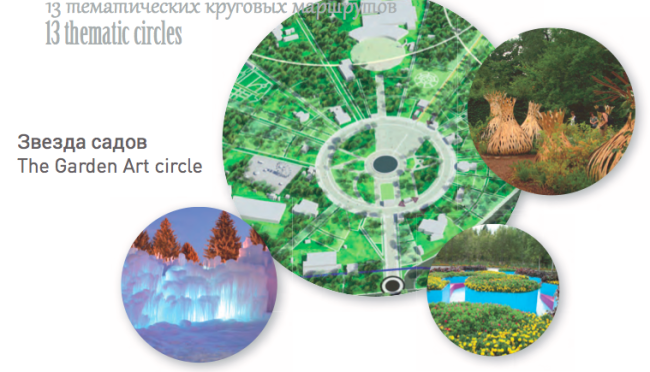
Fifth place. "Smart Park" Project. Authors: Ilex Paysages et Urbanisme and Wagon Landscaping (France), Real Landscape (Russia).
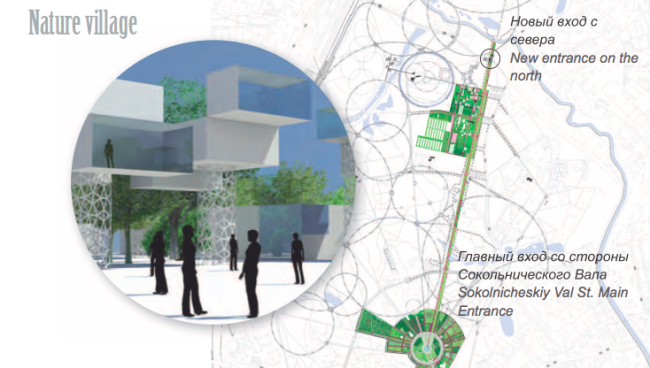
Fifth place. "Smart Park" Project. Authors: Ilex Paysages et Urbanisme and Wagon Landscaping (France), Real Landscape (Russia).
The authors propose a flexible implementation schedule designed to be done in three stages, and depending to a large extent on sponsors and investors who potentially could even develop equestrian sports or balneology in the park, even small-scale financial investments making a positive difference. At a minimum investment level it would be possible to make a dedicated horseback riding route, at a medium level - create a thematic "park within a park", and at a high one - build a full-scale racecourse.
The contestants tried and made their proposal as much respectful as possible of the already existing place, sufficiently creative and attractive but at the same time quite practicable. According to them, the changes proposed will help to draw significantly larger crowds - while today the main bulk of the visitors predominantly consists of the people from the adjacent neighborhoods, in the future it will be possible to attach people from all over Moscow and Moscow area, as well as long-distance tourists.
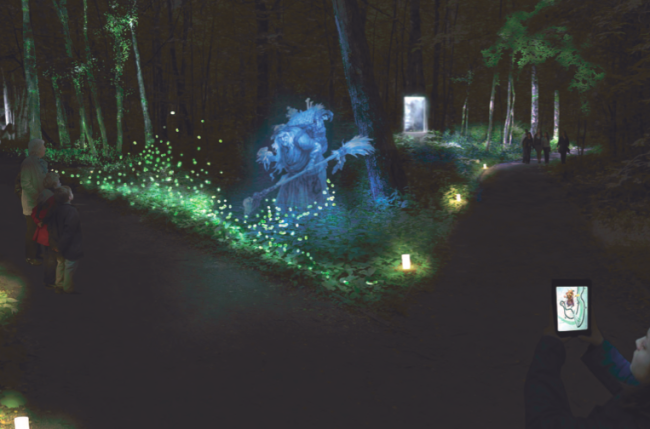
Fifth place. "Smart Park" Project. Authors: Ilex Paysages et Urbanisme and Wagon Landscaping (France), Real Landscape (Russia).
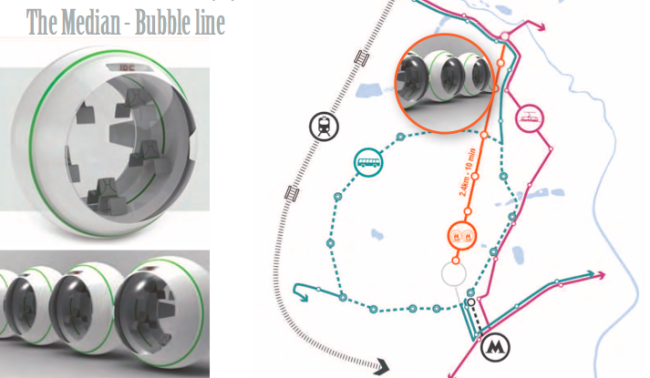
Fifth place. "Smart Park" Project. Authors: Ilex Paysages et Urbanisme and Wagon Landscaping (France), Real Landscape (Russia).
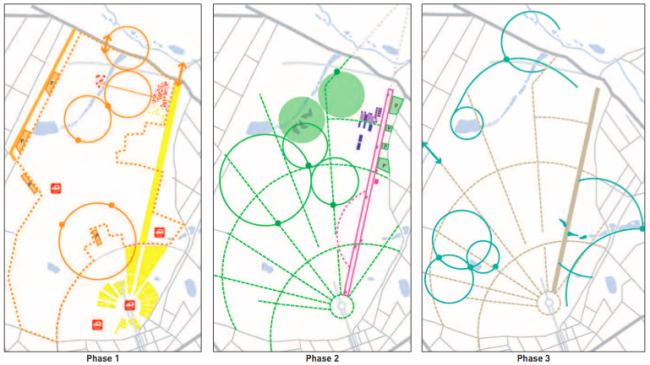
Fifth place. "Smart Park" Project. Authors: Ilex Paysages et Urbanisme and Wagon Landscaping (France), Real Landscape (Russia).
***
6 / Four parks, forty forests, one Sokolniki
Authors: MLA+ B.V. and OPENFABRIC Landscape for Contemporary City (Netherlands), OPAS Architecture and Urban Strategies (Netherlands).
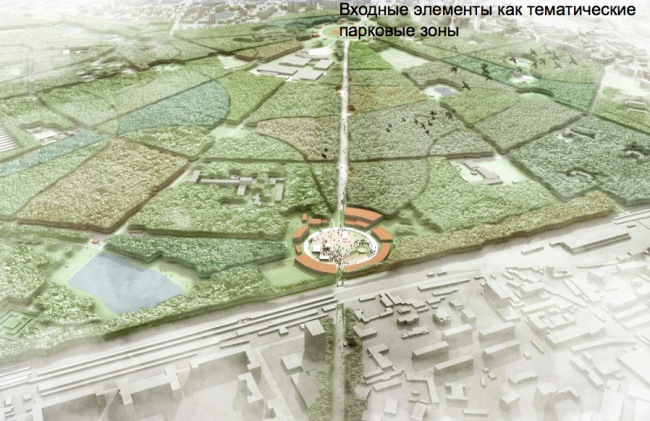
Sixth place. "4 Parks, 40 forests, one Sokolniki". Authors: MLA+ B.V. и OPENFABRIC Landscape for Contemporary City (Netherlands), OPAS Architecture and Urban Strategies (Netherlands).
The Sokolniki Park has a huge potential to it: this is a huge piece if land that provides opportunities both for entertainment and for communicating with the nature. Today, however, these two identities rather stand out as two opposites. The authors thought it would be the right thing to do to make this system more balanced and develop simultaneously four parks within one: an amusement park, a city garden, a landscaped park, and a wild natural one. Each of them will have a unique flavor of its own and each of them will cater to different people's needs.
The three main entrances will be designed as thematic zones (a square of fountains, a square of sports and health, a forest square), great venues for large-scale public events. The main clearings will turn into areas of the "city garden" where all the commercial activities will be gathered. The central territories will become parts of the landscape park, while the more remote territories will become natural forest areas where one can go exploring the woods through different trails and routes. The rich variety of nature got reflected in the concept of "forty forests" - all the park territory can be divided into forty fragments, each with a unique flora and fauna of its own.
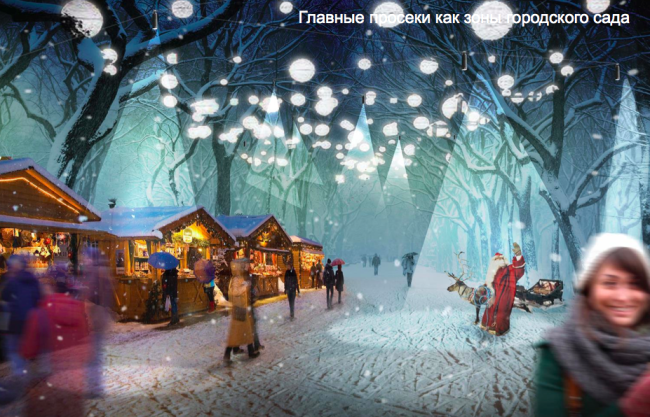
Sixth place. "4 Parks, 40 forests, one Sokolniki". Authors: MLA+ B.V. и OPENFABRIC Landscape for Contemporary City (Netherlands), OPAS Architecture and Urban Strategies (Netherlands).
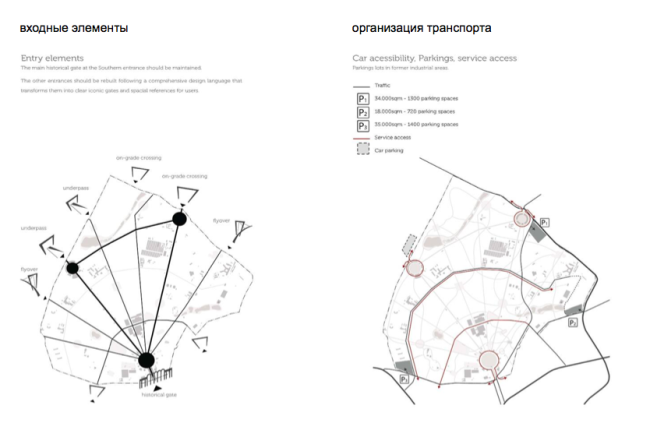
Sixth place. "4 Parks, 40 forests, one Sokolniki". Authors: MLA+ B.V. и OPENFABRIC Landscape for Contemporary City (Netherlands), OPAS Architecture and Urban Strategies (Netherlands).
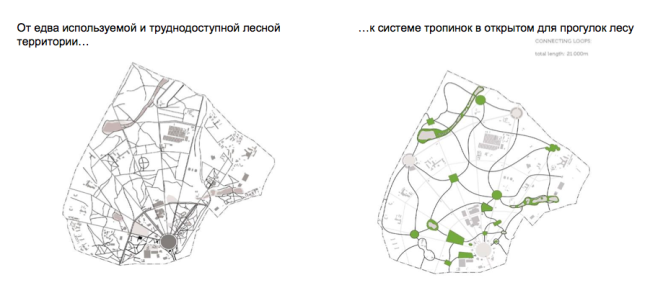
Sixth place. "4 Parks, 40 forests, one Sokolniki". Authors: MLA+ B.V. и OPENFABRIC Landscape for Contemporary City (Netherlands), OPAS Architecture and Urban Strategies (Netherlands).
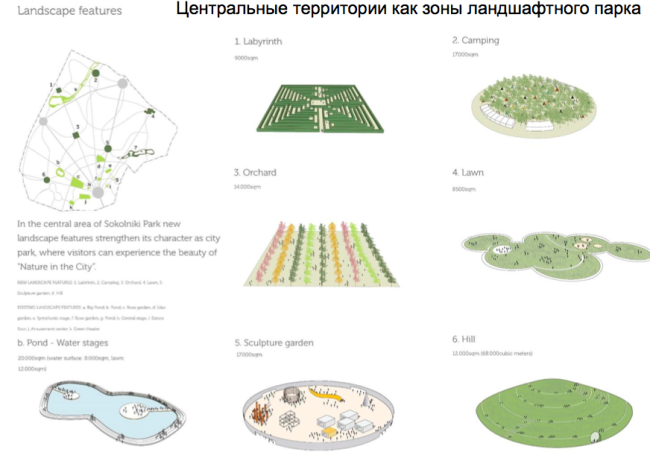
Sixth place. "4 Parks, 40 forests, one Sokolniki". Authors: MLA+ B.V. и OPENFABRIC Landscape for Contemporary City (Netherlands), OPAS Architecture and Urban Strategies (Netherlands).
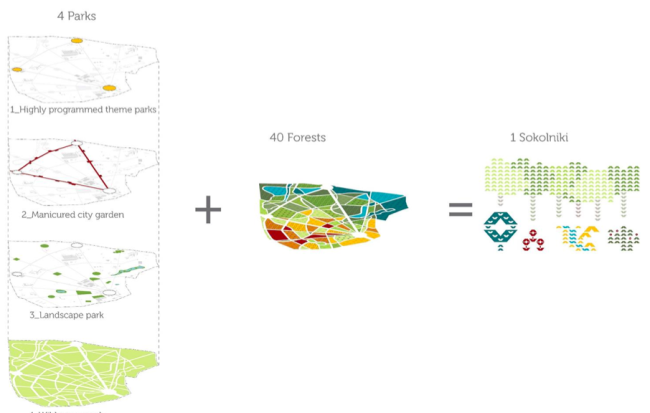
Sixth place. "4 Parks, 40 forests, one Sokolniki". Authors: MLA+ B.V. и OPENFABRIC Landscape for Contemporary City (Netherlands), OPAS Architecture and Urban Strategies (Netherlands).
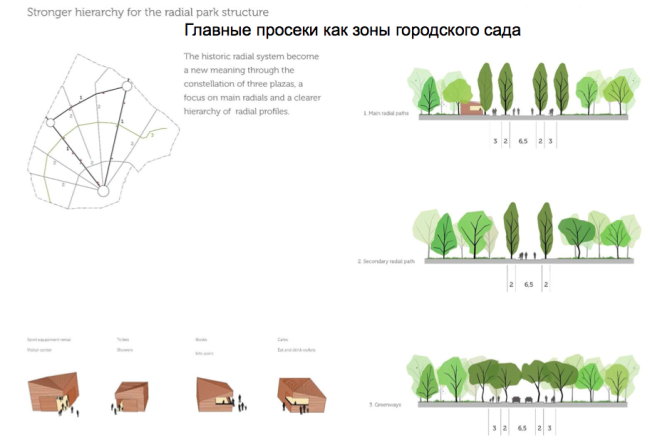
Sixth place. "4 Parks, 40 forests, one Sokolniki". Authors: MLA+ B.V. и OPENFABRIC Landscape for Contemporary City (Netherlands), OPAS Architecture and Urban Strategies (Netherlands).
The authors claim that Sokolniki must be integrated into Moscow's "green belt" connecting it to the Ostankino Park and the Izmailovo Park by a green band running along the Yauza River. Strengthening this connection will be made possible by laying a network of bicycle and pedestrian trails. The size of Sokolniki allows for as much as tripling the current visitor turnout without causing any considerable harm to nature, while the thought-out zoning and event content will lead to a more even distribution of people's activities within the park.
Among other things, the authors came up with the criteria for the selection of the event content on the park as well as the all-season calendar of the events together with the new administrative structure and financial model.
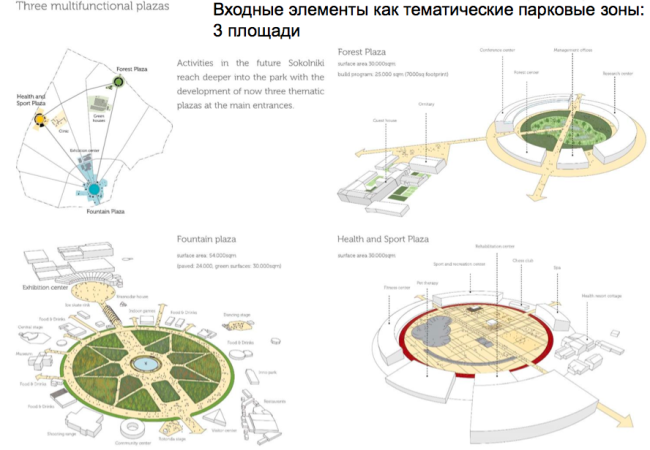
Sixth place. "4 Parks, 40 forests, one Sokolniki". Authors: MLA+ B.V. и OPENFABRIC Landscape for Contemporary City (Netherlands), OPAS Architecture and Urban Strategies (Netherlands).
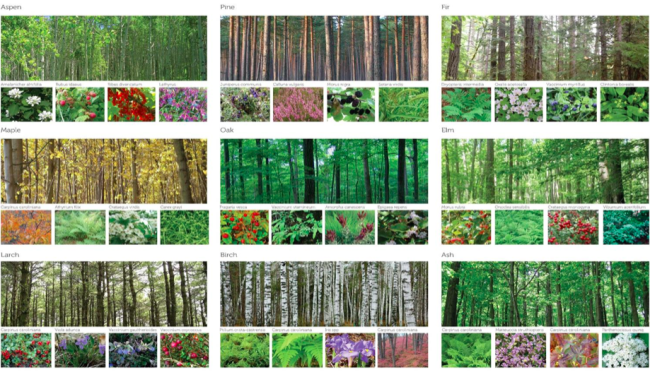
Sixth place. "4 Parks, 40 forests, one Sokolniki". Authors: MLA+ B.V. и OPENFABRIC Landscape for Contemporary City (Netherlands), OPAS Architecture and Urban Strategies (Netherlands).
***
7 / Retro Development
Authors: Institute of ecological planning and survey Liga-Alef (Russia)
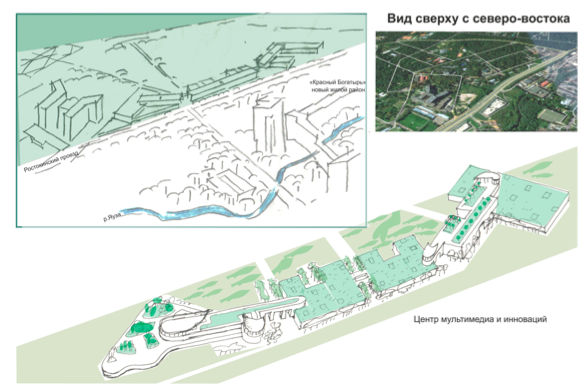
Seventh place. Authors: Institute of ecological planning and survey Liga-Alef (Russia)
Inspired by the rich and interesting past of the park's territory, the authors proceeded from the idea of traveling through time. It is planned to restore not only the lost material objects of various epochs (dachas, cafés, pavilions, and labyrinths) but also less tangible images of the past: songs and shadows of the events long forgotten.
In this project, the famous Sokolniki "ray paths" are revised theoretically. In the "ray" of literature and fine arts, for example, one will be able to see a video installation of the Tolstoy's duel between Pierre Bezukhov and Theodor Dolokhov. At the History Ray, there will be the “Falconry” pavilion, and the laser light effects named "Shadows of the Past", a cafe street, and a tea -party meadow. Other territories: "Dachas" camping, a zone for active recreation, an innovation zone with "green" architecture, as well as the New Axis - the former transit corridor meant exclusively for eco transport.
Apart from that, the authors propose to create a "Park of Highlights and Shadows" - the lighting installations will not only lighten up some parts of the park and accentuate the walking trails but also create interesting effects: a "light" rain and snow in summer, green meadows and golden leaves in winter, and "shadowy" pictures from the history of the park. For the implementation of their numerous ideas and insights, the authors formed an investment program and highlighted the key financial figures.
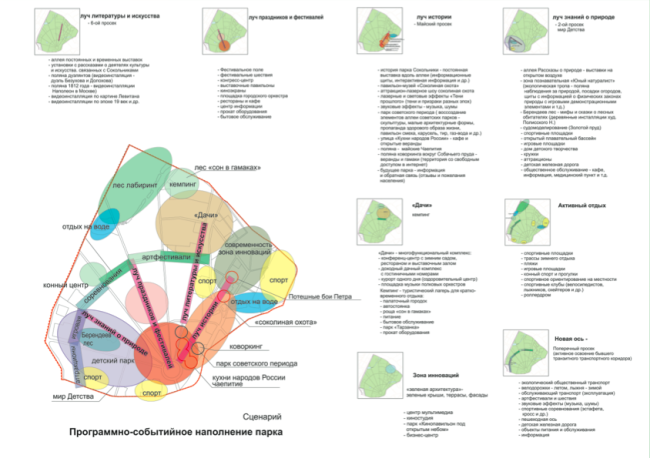
Seventh place. Authors: Institute of ecological planning and survey Liga-Alef (Russia)

Seventh place. Authors: Institute of ecological planning and survey Liga-Alef (Russia)

Seventh place. Authors: Institute of ecological planning and survey Liga-Alef (Russia)
***
8 / (In)visible Paths
Authors: OKRA (Netherlands), City architectural bureau PR (Russia).
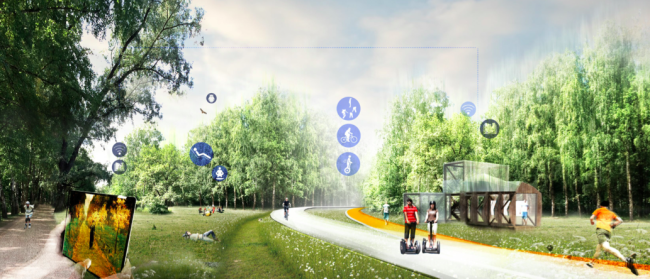
The authors of this project concentrated on solving the park's most basic problems: reuniting it with the surrounding green territories and the Yauza River, restoring its historical connections, developing new routes, rearranging the activity all over the park's territory and creating a system of eco transportation. The "jewel" of the project is the unique system of a pavilion family, "trigger points" providing the evenness of the visitor turnout all over the territory of the park.

Eighth place. "(In)visible Paths" Project. Authors: OKRA (Netherlands), City architectural bureau PR (Russia)

Eighth place. "(In)visible Paths" Project. Authors: OKRA (Netherlands), City architectural bureau PR (Russia)

Eighth place. "(In)visible Paths" Project. Authors: OKRA (Netherlands), City architectural bureau PR (Russia)

Eighth place. "(In)visible Paths" Project. Authors: OKRA (Netherlands), City architectural bureau PR (Russia)

Eighth place. "(In)visible Paths" Project. Authors: OKRA (Netherlands), City architectural bureau PR (Russia)
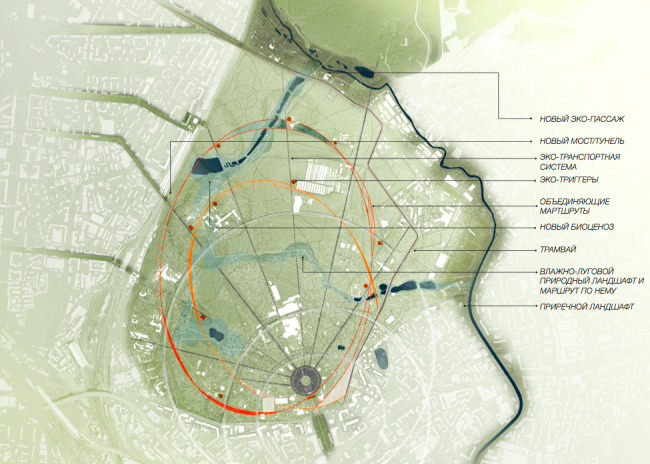
Eighth place. "(In)visible Paths" Project. Authors: OKRA (Netherlands), City architectural bureau PR (Russia)
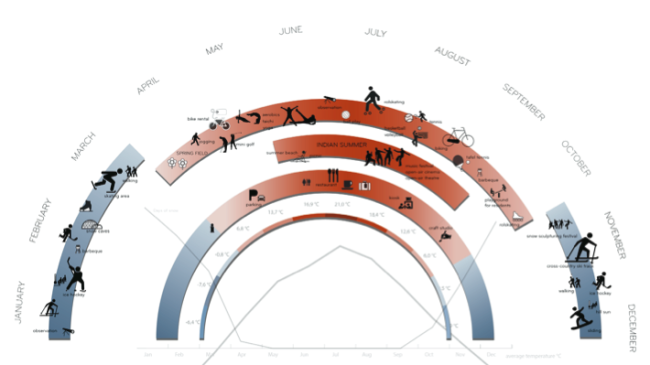
Eighth place. "(In)visible Paths" Project. Authors: OKRA (Netherlands), City architectural bureau PR (Russia)
***
9 / Fifty Gardens of Sokolniki
Authors: Ove Arup & Partners International Limited
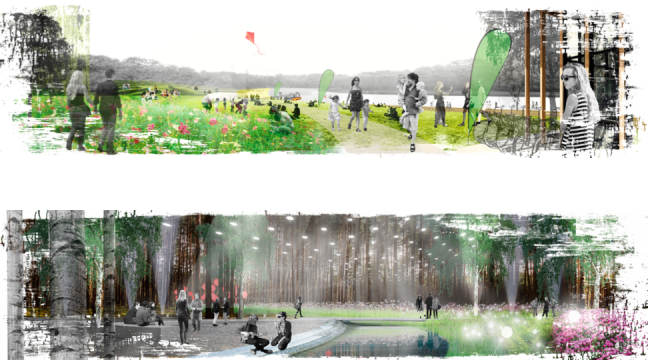
Ninth place. "50 Gardens of Sokolniki - the Pride of Russia". Authors: Ove Arup & Partners International Limited
The starting point and the momentum factor for the development of the park could be a large international expo event - for example, a landscape biennale, meant to celebrate Russian nature and Russian culture. The authors of the project propose to divide the territory of the park into fifty plots that will be every two years, within the framework of the biennale, handled by landscape architects and designers from all over the world. Thus, for the development of the park it is necessary to make four major steps: protect the forest and the historical planning, create a full-scale international expo event, think out the infrastructure, and expand the "mobility" of the park and its "bio-variety" by making a large-scale reservoir.
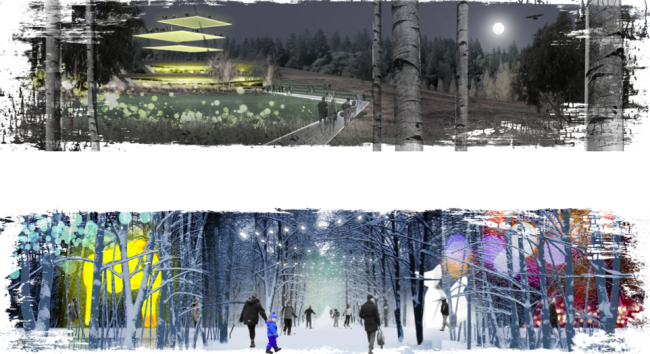
Ninth place. "50 Gardens of Sokolniki - the Pride of Russia". Authors: Ove Arup & Partners International Limited
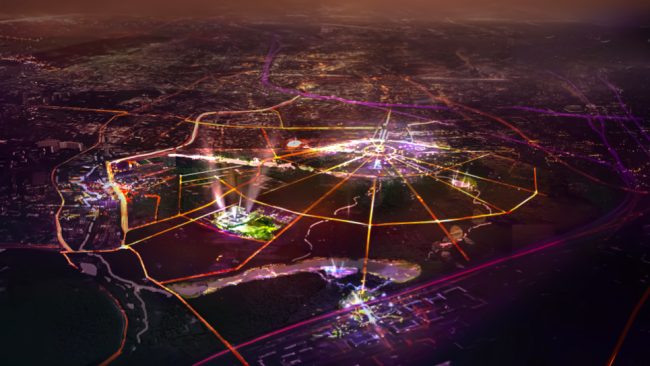
Ninth place. "50 Gardens of Sokolniki - the Pride of Russia". Authors: Ove Arup & Partners International Limited
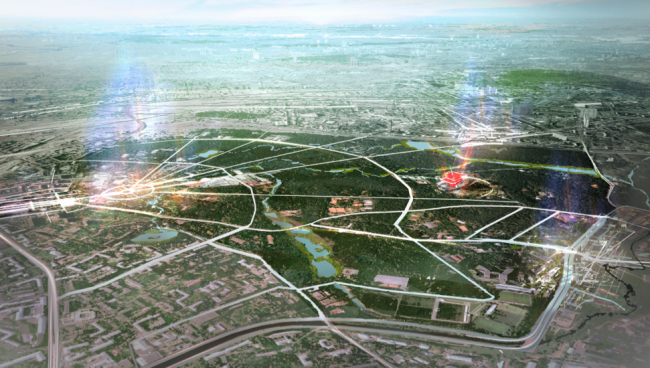
Ninth place. "50 Gardens of Sokolniki - the Pride of Russia". Authors: Ove Arup & Partners International Limited
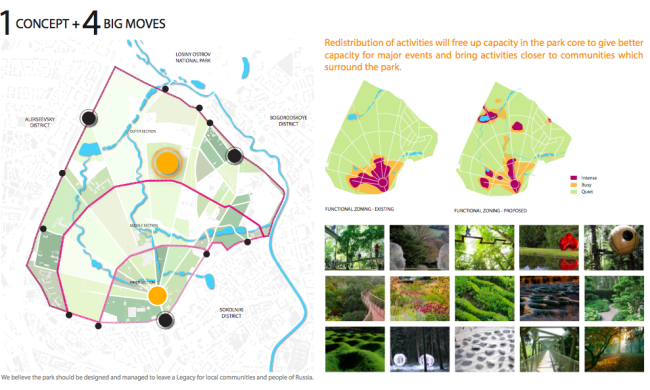
Ninth place. "50 Gardens of Sokolniki - the Pride of Russia". Authors: Ove Arup & Partners International Limited
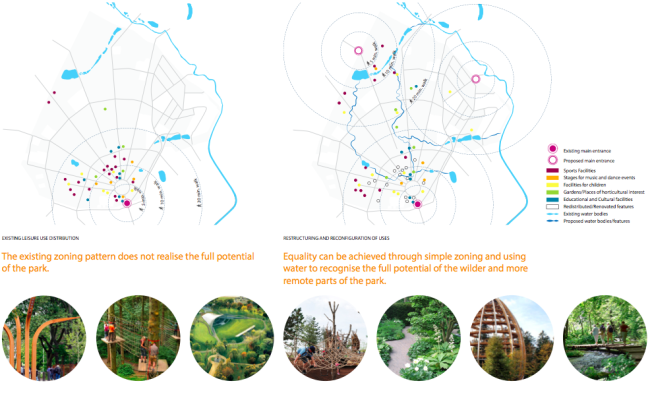
Ninth place. "50 Gardens of Sokolniki - the Pride of Russia". Authors: Ove Arup & Partners International Limited
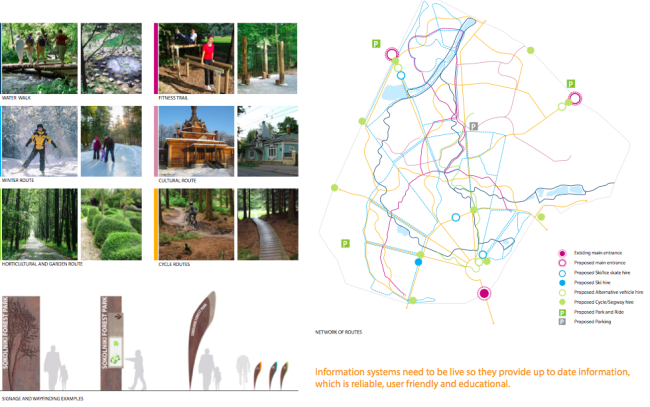
Ninth place. "50 Gardens of Sokolniki - the Pride of Russia". Authors: Ove Arup & Partners International Limited





